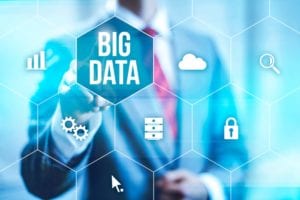 As in the majority of industries, the amount of data that utilities have access to is growing exponentially. Smart grid technology in particular provides detailed data on generation and transmission systems.
As in the majority of industries, the amount of data that utilities have access to is growing exponentially. Smart grid technology in particular provides detailed data on generation and transmission systems.
Intelligent thermostats, outlets, next-generation meters and even appliances all offer detailed usage data.Comprehensive weather data equally plays a key role.
“Today, the name of the game for utilities is applying analytics to help make sense of all this data and enable more effective programmes and communications with customers,” says Jenny Roehm, senior manager of Utility Residential Solutions at Schneider Electric.
She explains how these systems can work together with the proper analytics behind them by pointing out that a smart meter will tell a utility that a particular homeowner uses a lot of energy at certain times of day, or days of the week.
“Add smart thermostats to the mix and now the utility can easily determine to what extent the HVAC system is driving peak energy use for a given homeowner, or group of homeowners. With appropriate demand response (DR) or time of use (TOU) programmes in place, the utility can take steps to encourage those users to cut back their energy use during peak periods,” Roehm continues.
“Now add in weather data and utilities can predict when they’ll need their DR or TOU programs most and get in touch with target customers early in the game, to get them on board.”
The amount of data that is now involved in this kind of equation goes far beyond what was available with a simple meter. “The data is dynamic, constantly changing. Only an advanced analytics system will be able to keep up with that kind of quantity and constant change,” Roehm highlights.
Analytics systems a must
“Utilities have little choice but to invest in such analytics systems if they want to remain engaged with customers and offer the kind of services they find valuable. Whereas once the electric utility was one of the only players that had a foothold – the meter – in each customer’s home, now all kinds of companies do. Whether it’s your Apple TV, Xbox console or apps on smart phones and other devices, many different types of companies are collecting more and more information on their customers.”
Utilities cannot afford to be left behind, as customers will expect them to keep up with the pace. “A customer who buys an electric car is going to expect the utility to make it easy to determine the best time to charge it – without having to think about it much, if at all.
“And, the more customers get in tune with renewable energy and the need to reduce energy use, the more they’ll be willing to turn to their utility for tools and programmes that can help – if utilities have offerings in place,” states Roehm.
“Deploying smart meters and the infrastructure to collect data is a good first step, but utilities will need to also embrace and deploy advanced analytics in order to take full advantage of the opportunity that the Internet of Things world presents,” she concludes.
 As in the majority of industries, the amount of data that utilities have access to is growing exponentially. Smart grid technology in particular provides detailed data on generation and transmission systems.
As in the majority of industries, the amount of data that utilities have access to is growing exponentially. Smart grid technology in particular provides detailed data on generation and transmission systems. As in the majority of industries, the amount of data that utilities have access to is growing exponentially. Smart grid technology in particular provides detailed data on generation and transmission systems.
As in the majority of industries, the amount of data that utilities have access to is growing exponentially. Smart grid technology in particular provides detailed data on generation and transmission systems.